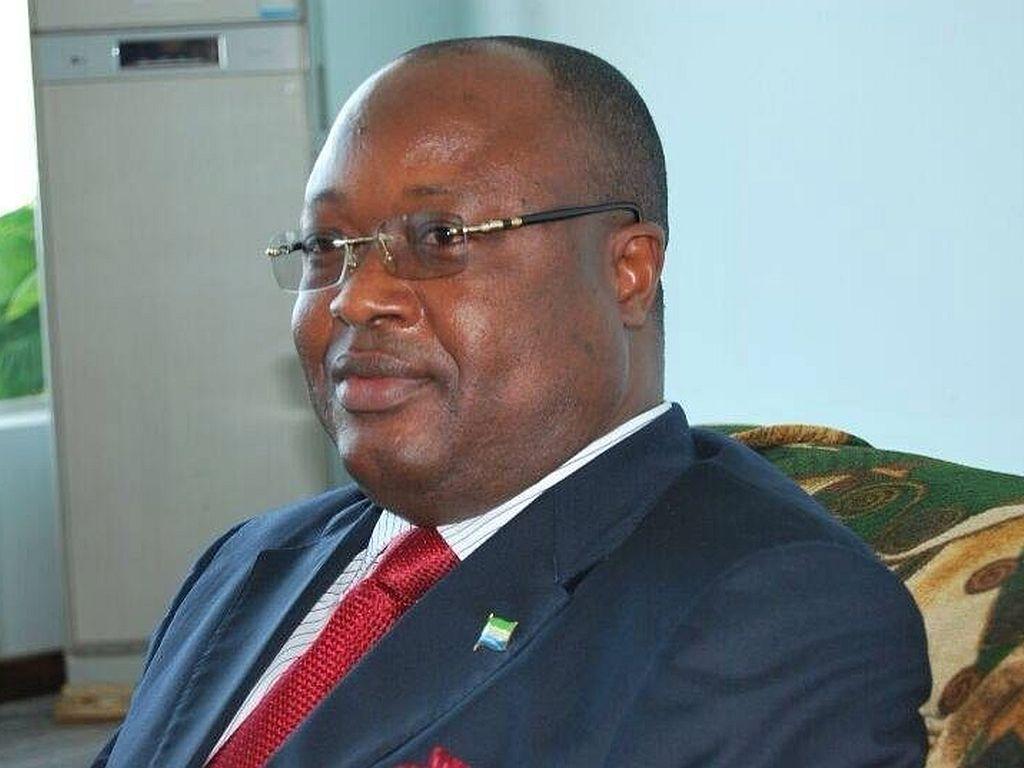By Tanu Jalloh
When, in my last article, I attempted to look at regulations in the financial sector or banking industry in Sierra Leone, I drew my premises from across the world with particular references to countries like United States of America, The United Kingdom and Nigeria, to drive home my arguments for a secure transactional environment.
The Sierra Leone economy is said to have witnessed sustained strong growth, driven by buoyant activity in the mining sub-sector and increased trade activities. In addition, there has been a strong performance in the telecommunications, financial services, construction and quarrying sub-sectors.The necessity for such a debate on regulation to the burgeoning banking sector could not have come at a better time. There is a regional boom in trade and investments, with financial institutions and banks as the conduits. They therefore must not go unregulated. There are, of course, risks involved in transfers and transactions; two of the key characteristics of direct foreign investments.
Far away from the emergency stage it was to the development stage it went through and the now transformation stage it is in post war years, the nearly six-million populated country still has a small group of elites at the helm of its economic affairs, despite the hovering global financial threats. Hence, there is need for a discourse of some sort to generate domestic policy frameworks that that appeal to global financial security and a broader approach to fiscal discipline. Literatures abound that there is a positive link between financial sector development and economic growth in the case of Sierra Leone.
In his financial sectors development summary to the 2012 annual gathering at the Bank Complex in Freetown Bank Governor, Dr Sheku Sambadeen Sesay, noted that developments in the financial sector during the year under review were based on provisional data. They showed that total assets of the banking industry in the country grew by 16.02 percent to over Le2.8 trillion, with industry profits increasing by 19.07 percent with twelve out of the thirteen banks recording a profit compared to 2010 when only eight banks recorded profits.
“Gross loans and advances also increased by 14.3 percent with Non-Performing Loans (NPLs) falling slightly to 14.96 percent compared to 15.61 percent for 2010. Nearly all banks have met their paid up capital as prescribed by the Bank of Sierra Leone and are all adequately capitalized with the exception of one bank. Despite these achievements in the banking sector, there are growing numbers of cases of fraud involving staff of commercial banks. This has necessitated collective action between the Bank of Sierra Leone and the commercial banks to strengthen internal control mechanisms in place and to ensure that names of dismissed staff are entered into a “black book” to prevent culprits from being recycled,” he noted.
Meanwhile, he admitted that some commercial banks experienced a temporary shortage of currency around the festive period, in what was dubbed the most biting liquidity crisis since the 1980s under a one party rule. He also owned up to claims by his critics that such an increase in demand was a common event around December, but argued that this year’s was “exacerbated…due to the increase in economic activity and the growth in the extractive sector, leading to heightened demand for the Leone.”
So what is the Bank doing to ensure a robust financial system that protects existing customers and ensure confidence for new ones? Recently the Bank together with the International Monetary Fund conducted a financial stability analysis on the banking system, and the results showed that while the banking system was fairly stable and robust, a number of banks were identified as being vulnerable to certain shocks. Therefore, to address such vulnerabilities, the Bank of Sierra Leone was supposed to take certain measures to include strict compliance with the Basel Core Principles (which are a core or standard effective banking supervision model), revising prudential guidelines, encouraging commercial banks to undertake self-stress tests and developing their own contingency manuals.
Eventually, one thing was clear that commercial banks need to adhere strictly to prudential rules and guidelines and the capital minimum requirements of commercial banks have to be enforced and increased in the near future. In 2007, 2008 and 2009 capital minimum requirements were Le 9 billion, Le12 billion and Le15 billion respectively. In December 2010 all thirteen commercial banks in the country were asked to double their minimum paid up capital from Le15 billion to Le30 billion. The money lodged with the central bank is probably the only guarantee of a recourse customers have in the event their banks defaulted or dissolved. This amount will cover a five year period starting December 31, 2010 to December 31, 2014.
There seems to be no clear cut difference in supervision and regulation as far as the central bank is concerned. The Banking Supervision Department of the Bank is only but a supervisor. Whereas supervision is weak with probably no enforceable wits, regulation is grounded in law with capacity, power or even authority to ensure compliance and penalise lawbreakers. It seems to be confined to community banks it helped established across the country, regulatory-wise. My hope is that the revised Bank of Sierra Leone Act 2012 should be able to achieve relative autonomy for the Bank of Sierra Leone to come up to speed with other regional central banks. On the same token, the revised Banking Act 2012should be seen to be strengthening the country’s supervisory framework with focus on issues such as governance structure and penalties for non-compliance with regulations and requirements. These are just how governments and independent financial regulators operate across the world; in fact Sierra Leone should be able to draw from the two Acts to put up an independent financial regulator that is modeled on basic financial system but with a global appeal.
This is an opportunity to deal with problems of insecurity around the operations of banks and other financial institutions. Those legal bases could be a sustainable source of power and capacity to administer regulatory laws, depending, of course, on the level of regulatory sophistication and political will that exist.
The Bank Governor had said that they “realized that the mix of innovations, new service providers, and inexperienced consumers has brought about new risks of fraud, abuse, technical and human error. The Bank will be developing a comprehensive approach to consumer protection which incorporates the role of government, service providers and the consumers…without financial literacy and capability, regulation may not be enough to protect consumers or reduce operational costs.”
How can the central bank use the Banking Act 2012 to help it set up and secure a robust regulatory trajectory ahead of the economic boom in Sierra Leone? Part VII–Powers Of Central Bank of the said Act talks about sections (45) examination of banks, (46) enforcement actions, and (48) regulations etc.
Under Section 45 (1) The Central Bank shall cause an examination to be made of each bank without notice or at very short notice, including a place of business outside Sierra Leone, periodically or whenever in its judgment the examination is necessary or expedient, in order to determine whether the bank is in a sound financial condition and that the requirements of this Act have been complied with in the administration of the bank’s affairs;46(1) If, in the judgment of the Central Bank, a director, executive officer or significant shareholder of a bank, has violated a provision of this Act, of a licence issued under this Act, or of any regulation, direction or guideline of the Central Bank, or has engaged in unsafe or unsound banking practices, the Central Bank may take any of the following enforcement measures against the person: - (a) issue written warnings; (b) impose fines for each day that the infraction continues, but the fines shall be of similar amount for the same type of infraction; (c) dismiss or suspend the person from the person’s position in the bank; (d) prohibit the person from serving or engaging in banking or financial business for a stated period or for life; (e) require the person to reimburse the bank for losses caused by the violations; (f) suspend the exercise of voting rights with respect to shares in the bank etc.; 48 states: The Central Bank shall make regulations, issue directions or guidelines and take actions as may be required from time to time for giving effect to this Act.








